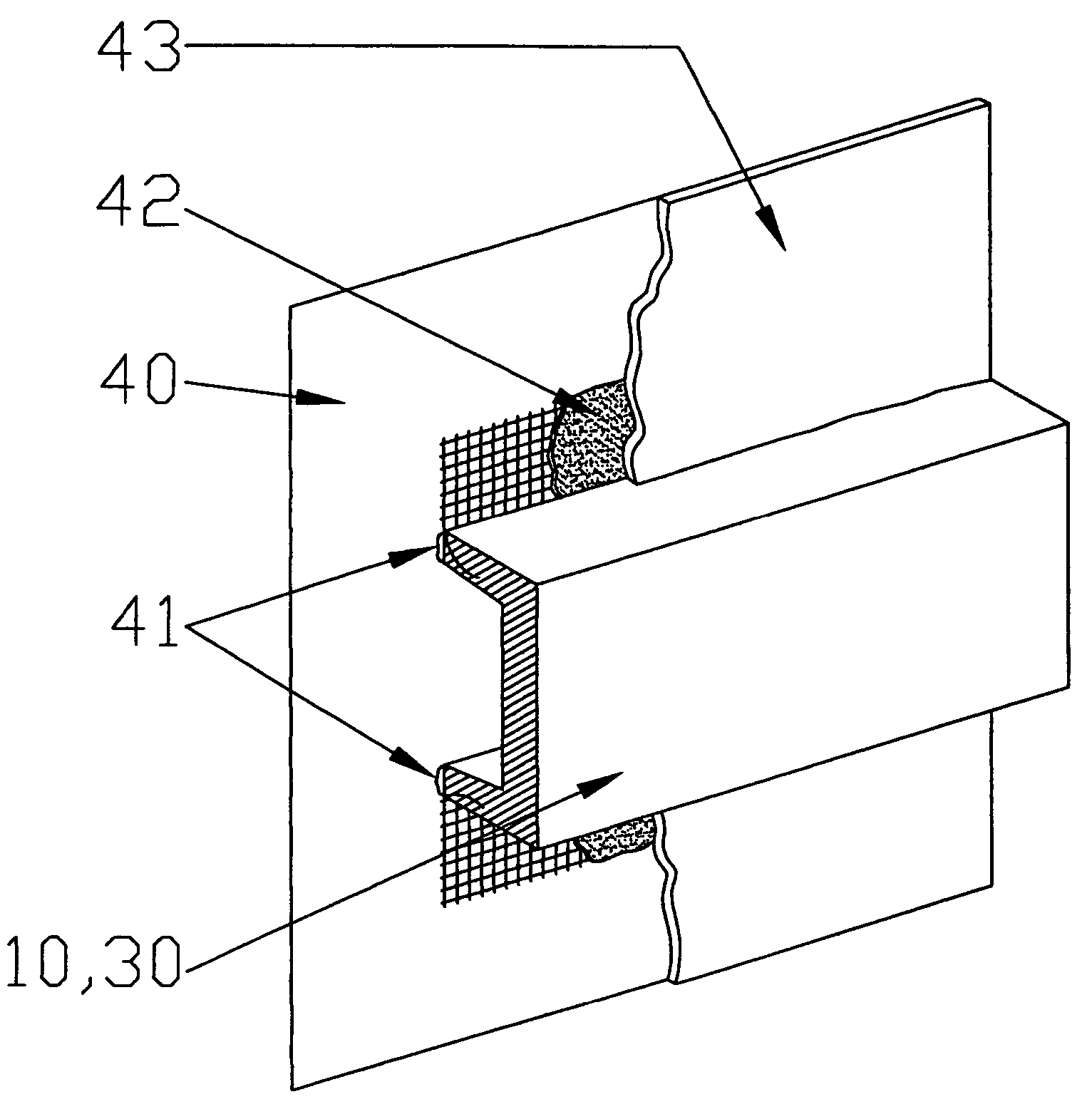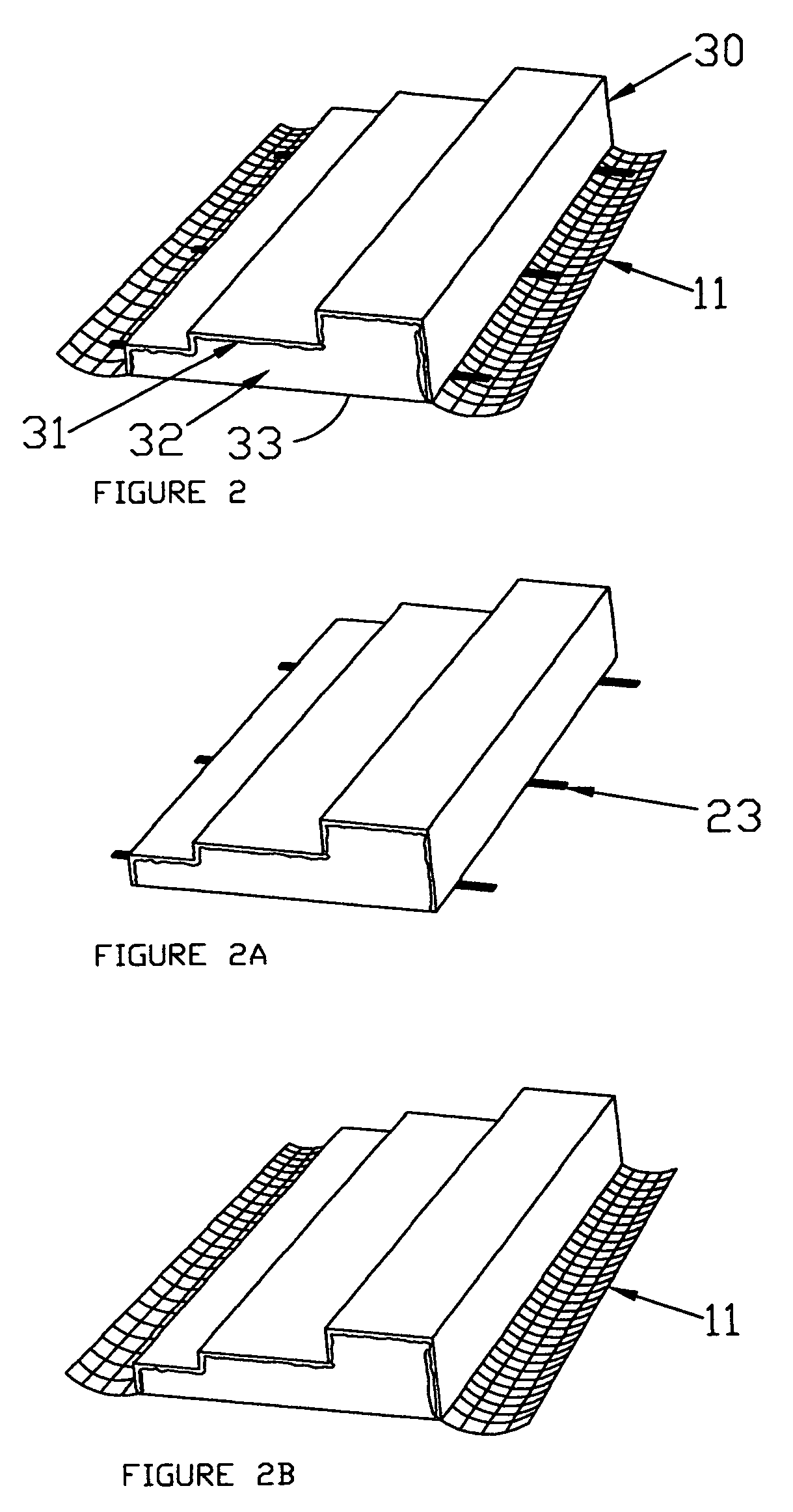Architectural building products and methods therefore
a technology for building products and buildings, applied in the field of architectural building products, can solve the problems of brittle fractures, large weight of products or objects, and large volume of finished products, and achieve the effects of reducing the cost of reinforcing, increasing the complexity of reinforcing, and increasing the cost of manufacturing
- Summary
- Abstract
- Description
- Claims
- Application Information
AI Technical Summary
Benefits of technology
Problems solved by technology
Method used
Image
Examples
Embodiment Construction
, Drawings and Claims, appended herewith.
[0012]The present invention comprises architectural building products or “trim” and methods for making, installing and finishing the same. The architectural trim comprises a rigid urethane having a mesh material and or tabs imbedded within the body of the architectural trim product and extending out from the sides thereof for purposes of aiding in the attachment of the architectural trim product to the surface of a building. The architectural trim is provided with any one of a virtually unlimited number of surface finishes or textures, natural and unnatural, at the time it is manufactured. The configurational shape of the trim is likewise unlimited. A combination of the density of the rigid urethane and in some instances, the thickness of the surface finish, provides for trim products that can be tailored to function in accordance with their end use, environment, and desired appearance. The architectural trim is adhesively attached to the sur...
PUM
 Login to View More
Login to View More Abstract
Description
Claims
Application Information
 Login to View More
Login to View More - R&D
- Intellectual Property
- Life Sciences
- Materials
- Tech Scout
- Unparalleled Data Quality
- Higher Quality Content
- 60% Fewer Hallucinations
Browse by: Latest US Patents, China's latest patents, Technical Efficacy Thesaurus, Application Domain, Technology Topic, Popular Technical Reports.
© 2025 PatSnap. All rights reserved.Legal|Privacy policy|Modern Slavery Act Transparency Statement|Sitemap|About US| Contact US: help@patsnap.com



